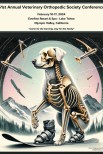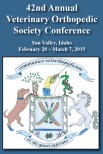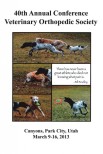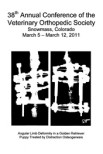Objective: To describe a new method for the tomographic measurement of canine tibial torsion, evaluate its repeatability and reproducibility, measure the torsion in 40 canine tibiae using both the new and traditional methods, and compare the results.
Study design: Retrospective case series.
Sample population: Tomographic study of the tibiae (n = 40) of client-owned dogs with medial patellar luxation (MPL).
Methods: A new method for measuring tibial torsion was described. Four evaluators measured the tibial torsion of 40 canine tibiae with MPL using this new method, with one evaluator repeating these measurements three times. Intraclass correlation coefficients (ICCs) were calculated to assess both intraobserver and interobserver variability for this new method. The same four evaluators also measured the torsion of the same 40 tibiae using the traditional method, and the ICC was calculated to evaluate its interobserver variability. Finally, the results from the new and traditional methods were compared.
Results: The intraobserver and interobserver ICCs for the new method were .99 and .83, respectively, indicating high agreement, excellent repeatability, and reproducibility. The interobserver ICC for the traditional method was .52, indicating moderate agreement. The new method thus demonstrated greater agreement among observers regarding tibial torsion values than the traditional method.
Conclusion: The new tomographic method was repeatable and reproducible for the measurement of tibial torsion in dogs with MPL.
Clinical significance: This report describes a new method for the tomographic measurement of canine tibial torsion, which can be used in preoperative planning for dogs with MPL.









